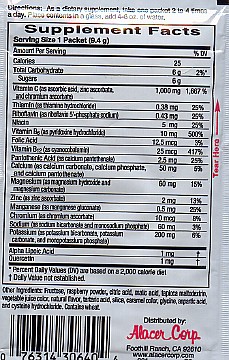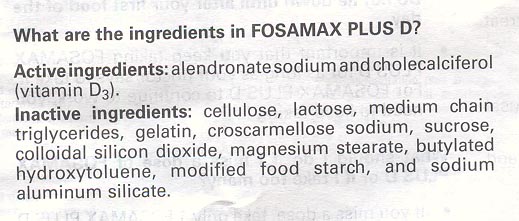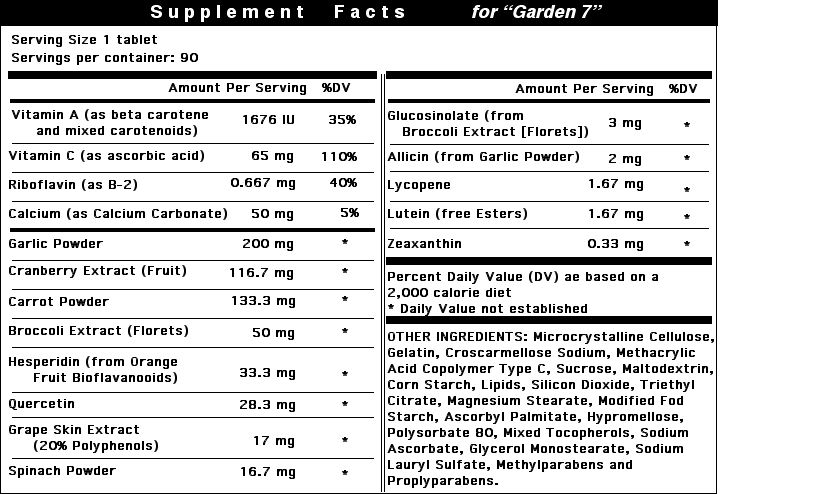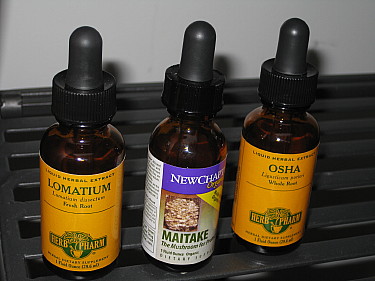When considering your intake from supplements, also
consider something people sometimes grab at the checkout counter.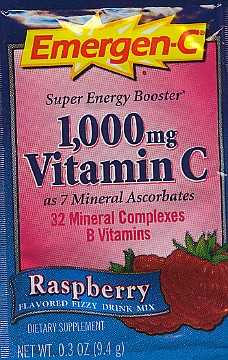 |
| Serving Size: 1 packet | % DV | |
| Vitamin C | 1,000 mg | 1,667% |
| Thiamin | 0.38 mg | 25% |
| Riboflavin | 0.43 mg | 25% |
| Niacin | 5 mg | 25% |
| Vitamin B6 | 10 mg | 500% |
| Folic Acid | 12.5 mcg | 3% |
| Vitamin B12 | 25 mcg | 417% |
| Pantothenic Acid | 2.5 mg | 25% |
| Calcium | 50 mg | 5% |
| Magnesium | 60 mg | 15% |
| Zinc | 2 mg | 13% |
| Manganese | 0.5 mg | 25% |
| Chromium | 10 mg | 8% |
| Sodium | 60 mg | 3% |
| Potassium | 200 mg | 6% |
| Alpha Lipoic Acid | 1 mg | no DV |
| Quercetin | 1 mg | no DV |
| The front of the above packet says it has
"32
mineral complexes" That many minerals aren't listed in the above
table. That's because some of the minerals have multiple
"complexes" listed on the label. For example the calcium in it is calcium
carbonate,
calcium phosphate and calcium pantothenate. You
can
click
see
on
this to see a larger image.
|
|
Sometimes another source of supplements is a beverage. Below is a 20-ounce bottle of a Glaceau-brand product called "Vitamin Water". Notice that the first column of the Nutrition Facts is given for an 8-ounce serving. The secomd column of the Nutrition Facts is for the whole bottle. 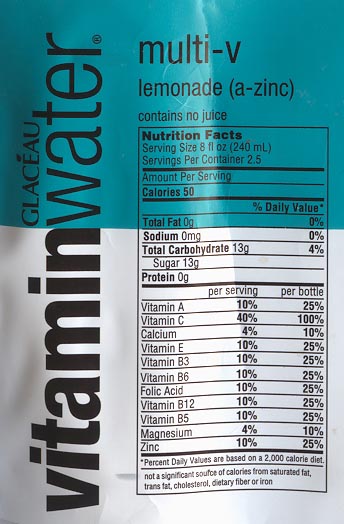 Video Clip 1 and Video Clip 2 will help you fill in page 100 of your packet and will help you answer Study Question 34 on page 111. |
| Video
Clip 1: Supplements Part 1 approximately 10 minutes If
these movies aren't showing up on
your
computer, you may
not have the latest version of QuickTime on your computer. Click here
to download the newest version of Quick Time.
|
| Video
Clip 2: Supplements Part 2 approximately 8 minutes |
| Optional Video
Clip: 1961
Radio Interview with Beth's great-grandfather, AD Naylor, age 100! in western Maryland approximately 4 minutes It's hard to believe that the
voice you'll hear is that of a 100-year-old man. If you can't
understand what he says at the very end, it's
"Stay busy and don't loaf on
the job."
|
